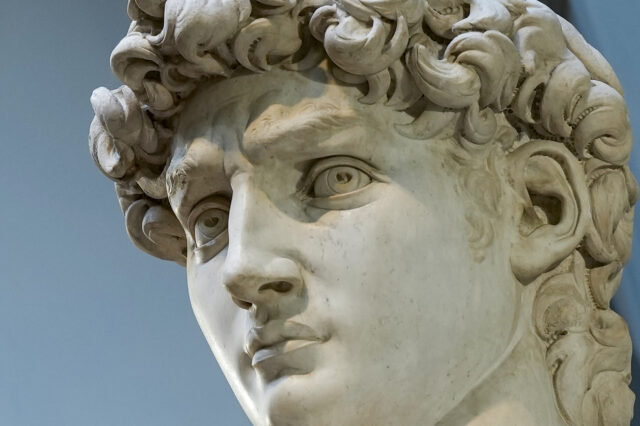FLORENCE, Italy Michelangelo’s colossal statue of David sculpted in 16th century Italy, is seen as a masterpiece of Renaissance culture. But is it being devalued by modern day commercialisation? The streets of Rome are full of vendors selling souvenirs of David, that range from small statues to refrigerator door magnets and of course T-shirts.
Curators find this debasing and Cecilie Hollberg, director of the Galleria dell’Accademia, has persuaded the state attorney office in Florence to file court cases, invoking Italy’s landmark cultural heritage code, which protects artistic treasures from disparaging and unauthorized commercial use. The Accademia has won hundreds of thousands of euros in damages since 2017, Hollberg said.
“There was great joy throughout all the world for this truly unique victory that we managed to achieve, and questions and queries from all over about how we did it, to ask advice on how to move,” she told The Associated Press.
Legal action has followed to protect masterpieces at other museums, not without debate, including Leonardo’s “Vitruvian Man,” Donatello’s David and Botticelli’s “Birth of Venus.”
The decisions challenge a widely held practice that intellectual property rights are protected for a specified period before entering the public domain — the artist’s lifetime plus 70 years, according to the Berne Convention signed by more than 180 countries including Italy.
More broadly, the decisions raise the question of whether institutions should be the arbiters of taste, and to what extent freedom of expression is being limited.
“It raises not just legal issues, but also philosophical issues. What does cultural patrimony mean? How much of a stranglehold do you want to give institutions over ideas and images that are in the public domain?” said Thomas C. Danziger, an art market lawyer based in New York.
He pointed to Andy Warhol’s famous series inspired by Leonardo’s “Last Supper.” “Are you going to prevent artists like Warhol from creating what is a derivative work?” Danziger asked. “Many people would view this as a land grab by the Italian courts to control and monetize artworks in the public domain that were never intended to be charged for.”
Italy’s cultural code is unusual in its scope, essentially extending in perpetuity the author’s copyright to the museum or institution that owns it. The Vatican has similar legislative protections on its masterpieces, and seeks remedies through its court system for any unauthorized reproduction, including for commercial use and for damaging the dignity of the work, a spokesman said.
Elsewhere in Europe, Greece has a similar law, adopted in 2020, which requires a permit to use images of historic sites or artifacts for commercial use, and forbids the use of images that “alter” or “offend” the monuments in any way.
Source: AP
Thirty eight years in journalism, widely travelled, history buff with a preference for Old Monk Rum. Current interest/focus spans China, Technology and Trade. Recent reads: Steven Colls Directorate S and Alexander Frater's Chasing the Monsoon. Netflix/Prime video junkie. Loves animal videos on Facebook. Reluctant tweeter.





